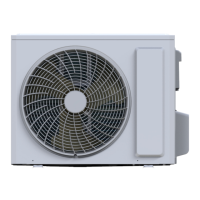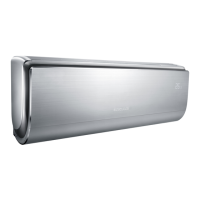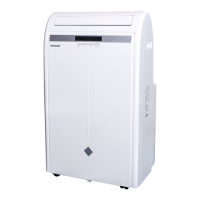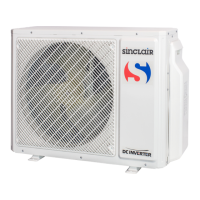58 Installation
Using vacuum pump to do the vacuum and never using refrigerant to expel the air.
Vacuum should be done from both liquid side and gas side simultaneously.
4.7 Additional refrigerant charge
Calculate the added r
efrigerant according to the diameter and the length of the liquid side pipe of the outdoor unit/indoor
unit connection.
When the outdoor unit connects one
indoor unit:
Liquid Side Piping Diameter
Refrigerant to be Added Perimeter Piping
Note: Additional refrigerant volume of divergent pipe is 0.1kg per item (Consider the liquid side of divergent pipe only).
4.8 Leak detection
Use soap water or leak detector to check every joint whether leaks or not.
Note: A is low pressure side stop valve.
B is high pressure side stop valve.
C and D are connecting pipes interface of indoor and outdoor units.
4.9 Heat Insulation
Do the heat insulation to the pipes of air side and liquid side separately. The temperature of the pipes of air side and liquid
side when cooling, for avoiding condensation please do the heat insulation fully.
The air side pipe should use closed cell foamed insulation material, which the fire-retardant is B1 grade and the heat
resistance over 120°C.
When the external diameter of copper pipe≤Φ12.7mm, the thickness of the insulating layer at least more than 15mm; When
the external diameter of copper pipe≥Φ15.9mm, the thickness of the insulating layer at least more than 20mm.
Please use attached heat-insulating materials to do the heat insulation without clearance for the connecting parts of
the indoor unit pipes.
Check point of outdoor unit
Check point of indoor unit
D
A
B
C
4.6 Vacuum

